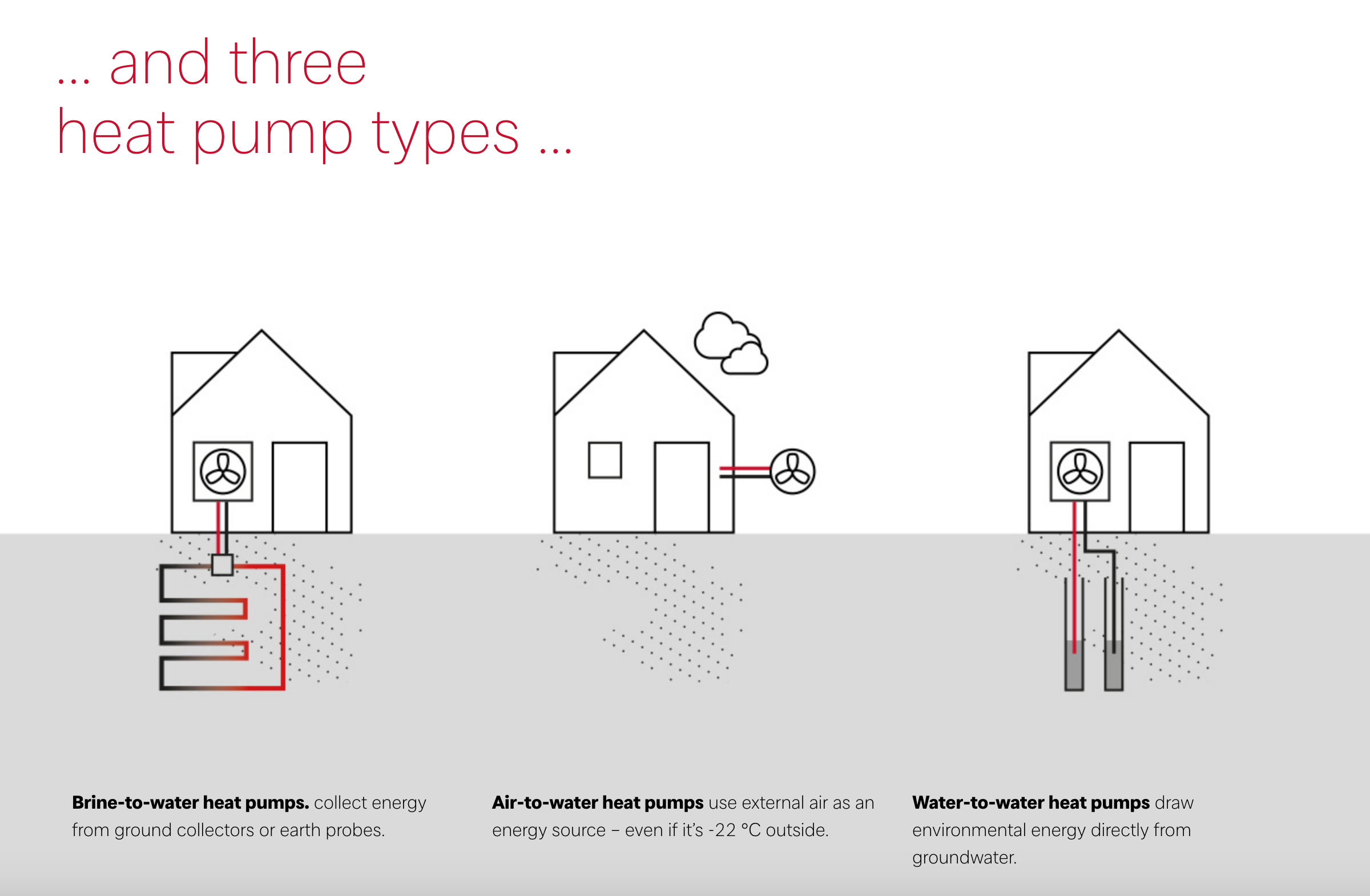There are various different types of heat pump depending on the source of the heat and the use of that heat in your home. While all types of heat pumps are worth the investment, your choice depends on two things:

There are various different types of heat pump depending on the source of the heat and the use of that heat in your home. While all types of heat pumps are worth the investment, your choice depends on two things:

When the heat source is the soil, we talk about ground source heat pumps. Similarly, the ones using the ambient air or a body of water are called air source and water source heat pumps, respectively. These umbrella terms can, then, be broken down based on the application.

Read more about the specific heat pump types below:

Ground source or geothermal heat pumps are, in most cases, used for heating water. With the help of additional system elements, it is possible to use heated air ventilation with geothermal systems, but it is far more common to use it for conventional radiators and underfloor heating.
Both air source and water source heat pumps can be used for heating water as well as indoor air in your home. When used for heating water, we refer to air-to-water heat pumps and water-to-water heat pumps. Water source, air-heating systems are called liquid-to-air heat pumps which are a kind of speciality products. Hot air ventilation is usually provided by air-to-air heat pumps. The latter can also be reversed and used for cooling your home — however, it is not eligible for the RHI.